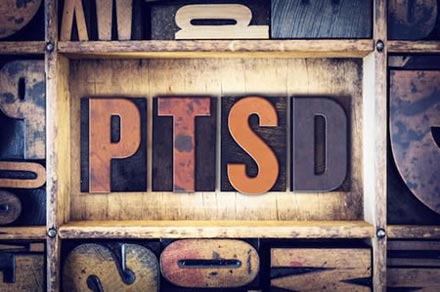
If you're like most people, when you hear the term “post-traumatic stress disorder” you think of war veterans and survivors of a traumatic event. When your life is in imminent danger, your fear triggers a fight-or-flight response that floods your body with adrenaline, so that you can respond to the threat. Once the threat has passed you may experience emotional aftershocks. This is the classic form of PTSD recognized by therapists and psychiatrists.
However, there’s an epidemic of hidden PTSD in our culture. In its true definition, PTSD involves lingering negative feelings that can result from any adverse experience—getting fired, the end of a relationship, chronic illness, or even just a time when you feel like you failed at something—and that limit a person in any way. These feelings can include fear, doubt, panic, avoidance, anger, hypervigilance, irritability, sadness, shame, vulnerability, distrust, and more.
There are no limitations to what can cause PTSD, yet even in today’s modern times of self-help, therapy, and emotional understanding, health professionals mostly reserve the term PTSD for life-or-death experiences. This ignores the numerous incidents that alter (for the worse) the way someone experiences life. Regardless of its cause or scope, PTSD negatively influences the choices we make and changes the fabric of who we are.
What is happening
On a physiological level, PTSD causes a chemical imbalance in the brain that occurs when someone experiences trauma. Glucose is a protective biochemical that provides a veil of protection for sensitive brain and neurological tissue. If there isn’t enough glucose stored in the brain to feed the central nervous system and to protect the brain from the corrosive effects of adrenaline and cortisol released during stress, emotional upheaval can create lasting effects. If someone’s glucose storage is low, she or he could get PTSD just from a flat tire, while someone with sufficient glucose storage could witness an armed robbery and tell the story to a friend over dinner that same day, unruffled.
Our culture also has a history of burying emotions with food (especially sugar), alcohol, drugs, and adrenaline-fueled activities. The problem with these approaches is that what goes up must come down. A sugar high from cupcakes means a crash later. And while an adrenaline high from running over fiery coals may feel healing and empowering in the moment, the surge won’t last.
Solutions for dealing with PTSD
One of the most powerful ways to heal PTSD is to create new experiences to serve as positive reference points in your life. These experiences don’t have to be big, or risky (nor should they be). It’s all about how you perceive each new adventure, however tame.
Keep a list of every new experience, taking notes on how you felt. For example, when you took a walk, did you see any birds? What was the weather like? What effect did it have on your state of mind? It’s all part of being in the moment. When you create new, constructive touch points for yourself—and pay attention to their positive effects—you train your brain to develop a healing response that is always available to you.
Try putting together a puzzle, painting, sketching, or drawing. These are powerful exercises that orient us in the present moment and help us pay attention to beautiful details in the world around us that otherwise go unnoticed.
Call up a friend you haven’t seen in years and ask her or him to lunch.
Adopt a pet—every day will be new and filled with love.
Start a new hobby. Choose a skill area you wouldn’t have expected yourself to venture
into, or one you always wanted to explore.
Journal about it all. It will help you become aware of the goodness life brings your way when you’re not even looking for it, and helps clear out negative experiences from your consciousness.
You can also literally nourish yourself with healing foods, including wild blueberries, melons, beets, bananas, persimmons, papayas, sweet potatoes, figs, oranges, mangoes, tangerines, apples, raw honey, and dates. These foods can create a glucose “storage bin” that helps prevent life disruptions from turning into PTSD.
You don’t have to live in a tortured state of mind anymore. By providing your body and soul with proper nutritional, emotional, and soul-healing support, you can reclaim your vitality and go back to fully living your life.
To learn more about PTSD, check out Medical Medium: Secrets Behind Chronic and Mystery Illness and How to Finally Heal.
This item posted: 10-Feb-2016
The information provided on this Site is for general informational purposes only, to include blog postings and any linked material. The information is not intended to be a substitute for professional health or medical advice or treatment, nor should it be relied upon for the diagnosis, prevention, or treatment of any health consideration. Consult with a licensed health care practitioner before altering or discontinuing any medications, treatment or care, or starting any diet, exercise or supplementation program. Neither Anthony William nor Anthony William, Inc. (AWI) is a licensed medical doctor or other formally licensed health care practitioner or provider. The content of this blog and any linked material does not necessarily reflect the opinions of Anthony William, AWI or the principal author, and is not guaranteed to be correct, complete, or up to date.
Thanks for printing this post. For more, visit nwwbettn.top